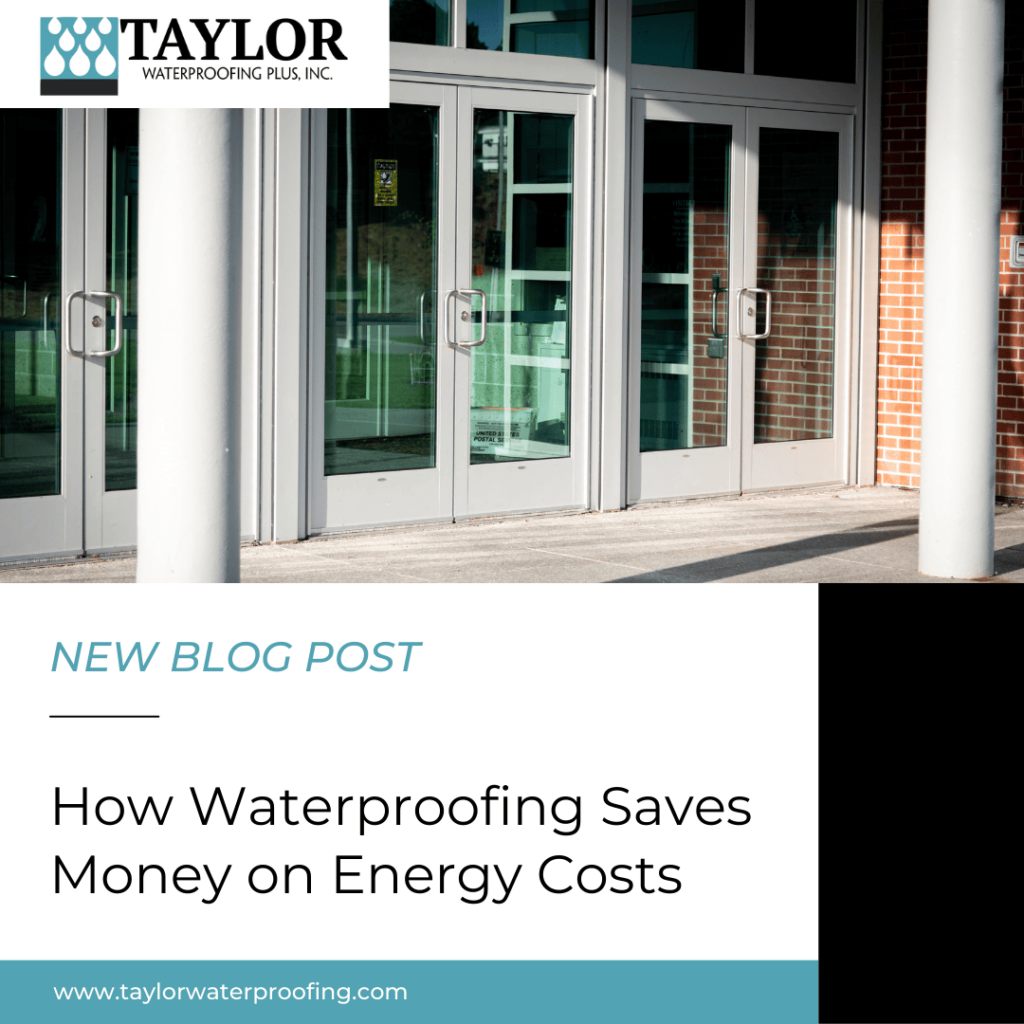
How Waterproofing Saves Money on Energy Costs
Waterproofing is more than just protecting your building from water intrusion. A huge benefit of waterproofing your building is that it saves money on energy costs. Leaks, cracks, and gaps lead to air leaks and insulation damage, forcing your HVAC system to work harder, and increasing energy bills. Sealants and coatings protect against rising temperatures in more ways than one.
Prevent Air Loss
Up to 30% of the energy loss in commercial buildings is due to air leakage. Air leakage can happen around doors, windows, expansion joints, cracks, and anywhere else in the building that has a leak. Sealants and coatings can be used around these areas to prevent air loss and keep the HVAC system from overworking.
Protect Insulation
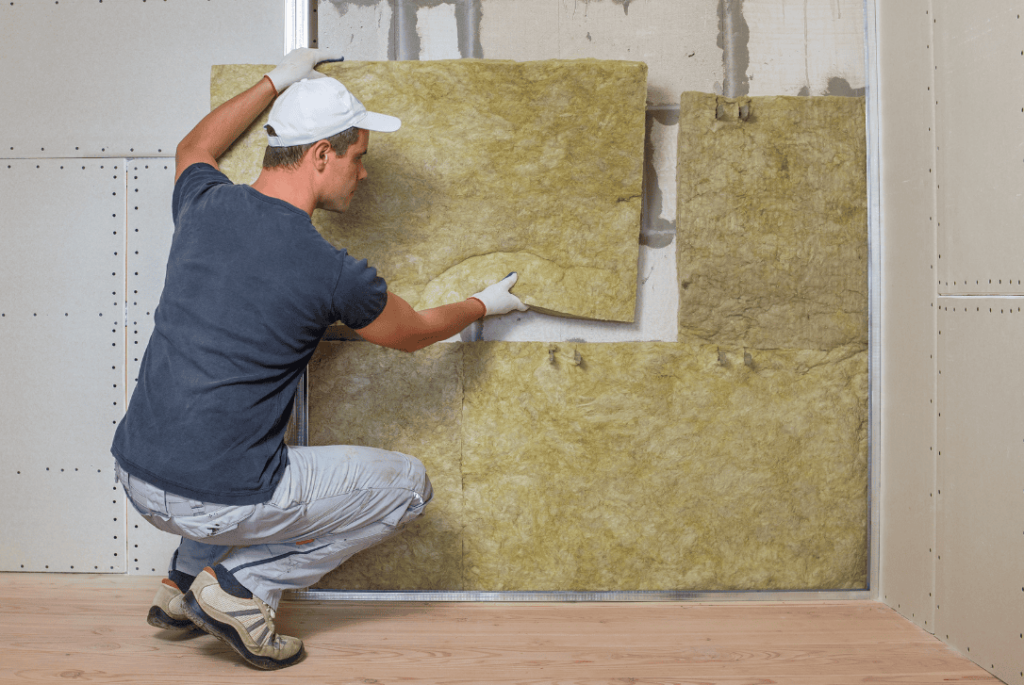
Insulation is used in the walls, between floors, in the roof, around the foundation, and in other areas of a commercial building. The job of insulation is to regulate the building’s temperature and reduce heat gain or loss, depending on the season. If insulation becomes wet, it loses a significant amount of its R-value. This is insulating capacity and ability to regulate temperature. By preventing leaks and water intrusion, you are preventing insulation damage and maintaining its effectiveness.
Combat Against Temperature Extremes
One thing that can overwork your HVAC system and cause your energy bills to jump up is extreme indoor temperature fluctuations. By creating waterproof barriers throughout your building, you’re creating stable indoor temperatures and reducing the strain on your heating and cooling systems.
Reduce Heat Absorption
UV-reflective coatings can be applied to your building’s exterior walls and help to reduce the amount of heat absorbed by the building. By reducing the amount of heat the building absorbs, the coatings keep the building cooler which leads to long-term cost savings.
Waterproofing does more than just protect your building from water damage. Your building’s energy efficiency and how well it is waterproofed are directly related. By sealing air leaks and creating waterproof membranes around key points in your building, you can lower energy costs. Contact us today to learn how we can help with your building’s energy efficiency here or give us a call at 713-691-1430.
Check out our blog to learn more about our waterproofing services!

Sealants and Coatings for Concrete Slabs
Concrete slabs are commonly used in parking garages, commercial flooring, walkways, foundations, and basements. Without sealant, the concrete slabs that make up your commercial building are vulnerable to water damage, such as cracking, erosion, spalling, deterioration, and efflorescence. Adding a sealant to the surface of the concrete slab will go a long way in ensuring durability and longevity. Sealants for concrete slabs are crucial in protecting your building and investment.
Types of Sealants for Concrete Slabs
Acrylic Sealant – This type of sealant is often used on decorative concrete flooring, such as lobbies. It offers the protection of wear and tear in high-traffic spaces while enhancing the appearance of the flooring.
Epoxy Sealant – Epoxy sealants create a chemical and impact-resistant barrier to protect the concrete. Because it is strong enough to withstand heavy machinery and foot traffic, it is often used in garages, industrial buildings, and warehouses. It also creates a sterile environment, so it is also often used in the food and healthcare industries.
Polyurethane Sealant – Because polyurethane sealants are flexible yet durable, they are often applied to expansion joints, foundations, structural concrete, and anywhere else in the building that might experience structural shifts. This sealant is highly crack-resistant and provides long-lasting waterproofing benefits.
Silicone Sealant – Silicone sealants are great for outdoor applications. These sealants are UV-resistant, flexible, and can endure extreme temperatures. These are commonly applied on balconies, facades, and parking garages.
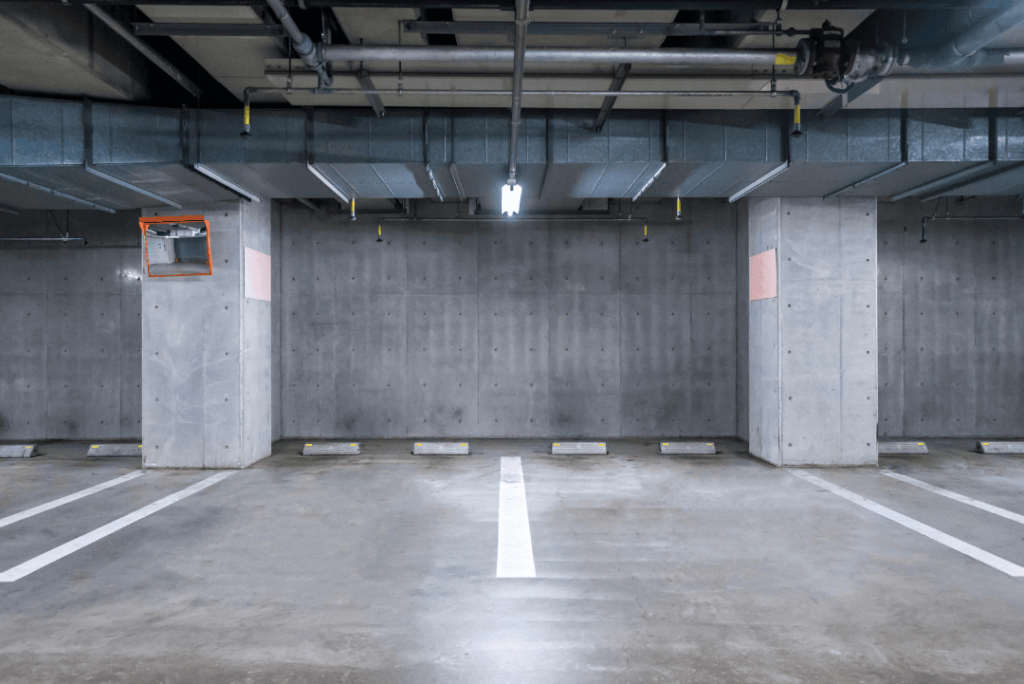
Benefits of Using Sealants for Concrete Slabs
The goal of using sealants is to protect the concrete and extend the life of the concrete slab. This helps you reduce your maintenance costs by adding a layer of protection against water infiltration and minimizing damage and repairs. Because sealant protects the concrete and reduces erosion, it also decreases the chances of injury due to uneven surfaces or unsafe building conditions.
When it comes to sealants for concrete slabs, there are many options to choose from. Our team of waterproofing experts can help you choose the right option for your building and ensure that your concrete is protected from water intrusion. If you think your concrete slabs need sealant applied or replaced, contact us today to learn how we can ensure long-lasting results.
Contact us today here or give us a call at 713-691-1430.
Check out our blog to learn more about our waterproofing services!
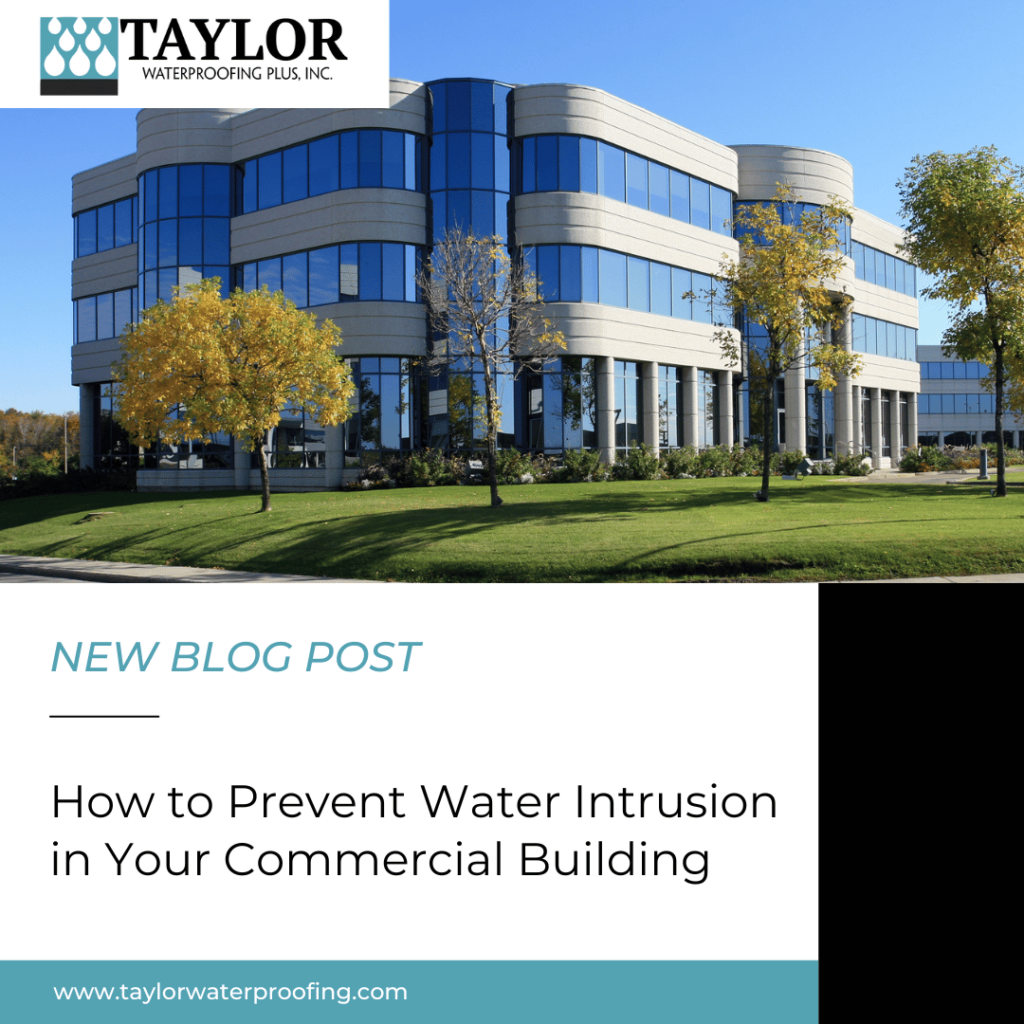
How to Prevent Water Intrusion in Your Commercial Building
Using preventive waterproofing measures before there is a leak will save you time and money. Damage caused by water intrusion can be costly and compromise your building’s structural integrity. Even small leaks can cause significant damage. The best way to prevent this damage is to be proactive and ensure your waterproofing systems are up-to-date and properly installed.
Water Damage in Commercial Buildings
Water intrusion can cause your building’s materials to break down and weaken, deteriorating your building over time. This can include metal elements starting to corrode, concrete cracking and chipping, paint peeling from walls, or, in extreme cases, the building’s structure failing. Water can also lead to water damage such as stains on walls, ceilings, and floors.
Common Causes of Water Intrusion
- Cracks That Developed Over Time
- Old or Damaged Waterproofing Membranes
- Improperly Installed Waterproofing Systems
Steps to Prevent Water Intrusion
Seal Windows and Doors – Gaps in windows and doors can allow water to seep into the interior of your building. This can stain and damage the walls and floors around the window or door. These areas should be checked regularly for worn weatherstripping or caulking. Our team can apply a sealant to the perimeter to ensure that your windows and doors are watertight.
Replace Sealant When Needed – Depending on the type of sealant used, it can last anywhere from 5 to 15 years. Although many commercial waterproofing sealants are extremely durable, they will degrade over time. Replacing waterproofing sealants when needed is an important step to ensuring your building is protected from water intrusion.
Seal Cracks in Concrete – Cracks are common in foundation and high-traffic areas. Cracks in concrete often act as entry points for water intrusion. These cracks can be filled with epoxy or polyurethane sealant or chemical grout injections for more extreme cracks.
Use Coatings and Sealants on Exterior Walls – Waterproof coatings and sealants can be applied to exterior walls as a first line of defense. These coatings and sealants can be customized to meet your specific needs and are available in various colors to complement your building’s design.
Our team can help with any of the above and more. We understand the importance of protecting your building from water intrusion and will help you take the right preventative measures.
Contact us today here or give us a call at 713-691-1430.
Check out our blog to learn more about our waterproofing services!

Common Mistakes to Avoid When Waterproofing Commercial Windows
Correctly waterproofing commercial windows is crucial for protecting and preserving your building. If the windows are not properly waterproofed, water can find its way into your building. This can not only cause unseemly watermarks and stains but also cause mold growth and mildew that can be detrimental to human health. If enough water finds its way into the building, it can cause structural damage and raise energy costs.
Common Mistakes in Waterproofing Commercial Windows
Failure to Clean Widows Beforehand – If the windows are not prepared before the waterproofing process, the sealant or waterproofing system will be applied over any dirt or dust that was left on the window. This can cause the sealant to break down quickly and not adhere correctly to the surface.
Incorrect Installation – To ensure the durability of the waterproofing system, it is crucial that it is properly installed. If it is not installed correctly, it could cause water intrusion, poor seals around the window frame, and costly repairs.
Incompatible or Low-Quality Materials – When waterproofing materials are not used correctly, it can compromise the effectiveness of the system and cost you more money over time. Many companies that manufacture waterproofing products offer warranties that may be voided if they are not used in the correct applications.
Neglecting Flashing or Joints – Waterproofing is a preventive maintenance effort and if flashing and joints are neglected in this effort, it can cause the deterioration of your commercial building. If you hire a company that doesn’t install proper flashing or seal joints due to inadequate training or cost-cutting, it can cause water damage and expensive maintenance costs and repairs.
Make Sure Your Windows are Protected with Taylor Waterproofing
At Taylor Waterproofing, our team is provided with comprehensive and proper training so these mistakes don’t happen on our watch. We prioritize expertise when it comes to waterproofing and stay up-to-date with the latest techniques and best practices. When you become a customer with us, you can rest assured that your windows and full building will be protected and properly waterproofed. To talk to a team member about your waterproofing needs, contact us through our website here.
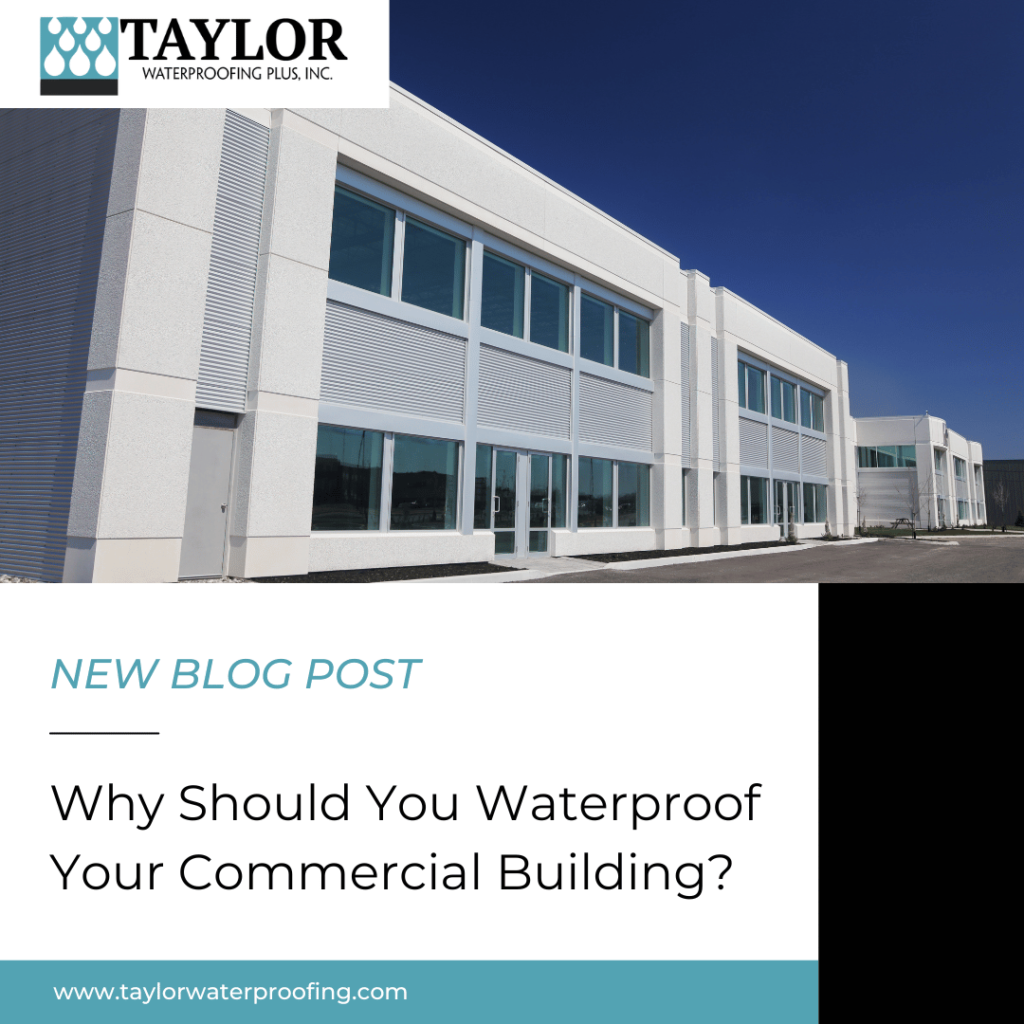
Why Should You Waterproof Your Commercial Building?
As a building owner or property manager, waterproofing your commercial building is an important part of contributing to the longevity and safety of your building. When you waterproof your commercial building, it is a proactive measure that prevents water damage and other related issues. Waterproofing is an essential component of any building maintenance program.
Reasons to Waterproof Your Commercial Building
- Protect Your Investment: Waterproofing helps preserve your building and prevents damage. Water damage can cause aesthetic and structural issues. Preventing these problems will allow you to maintain property value. You will also protect any interior assets, such as computers, furniture, inventory, and equipment, from being damaged by preventing potential leaks and flooding.
- Reduce Maintenance and Repair Costs: Waterproofing your building is an upfront cost that saves you money in the long run. The longer a leak or water damage is left, the more expensive it will be to repair and replace the materials. When you invest in waterproofing, you are reducing energy consumption and reducing energy costs by preventing air and water leaks and helping to regulate the indoor temperature.
- Prevent Mold and Mildew: If water damage isn’t resolved and water sits for extended periods of time on the drywall and insulation, mold and mildew will develop. By preventing moisture accumulation, you can reduce the health risks associated with mold and mildew and improve the air quality for your building’s occupants.
- Extend Your Building’s Lifespan: By preventing these damages and making the most out of your maintenance plan, you increase the longevity of your commercial building. A well-maintained building is one that lasts.
- Maintain Your Building’s Safety: Water infiltration can compromise your building’s structural stability. Water damage weakens your building and reduces its durability. These can cause major long-term issues and threaten the safety of the building. This can also cause you to not be in compliance with building codes and safety regulations.
Whether you are seeking guidance on preventative measures or solutions for existing issues, we’re here to provide the expertise you need. Our team of skilled professionals is dedicated to addressing any concerns you may have regarding commercial waterproofing and your building’s longevity. Contact us through our website or delve deeper into our services by exploring our informative blog here.
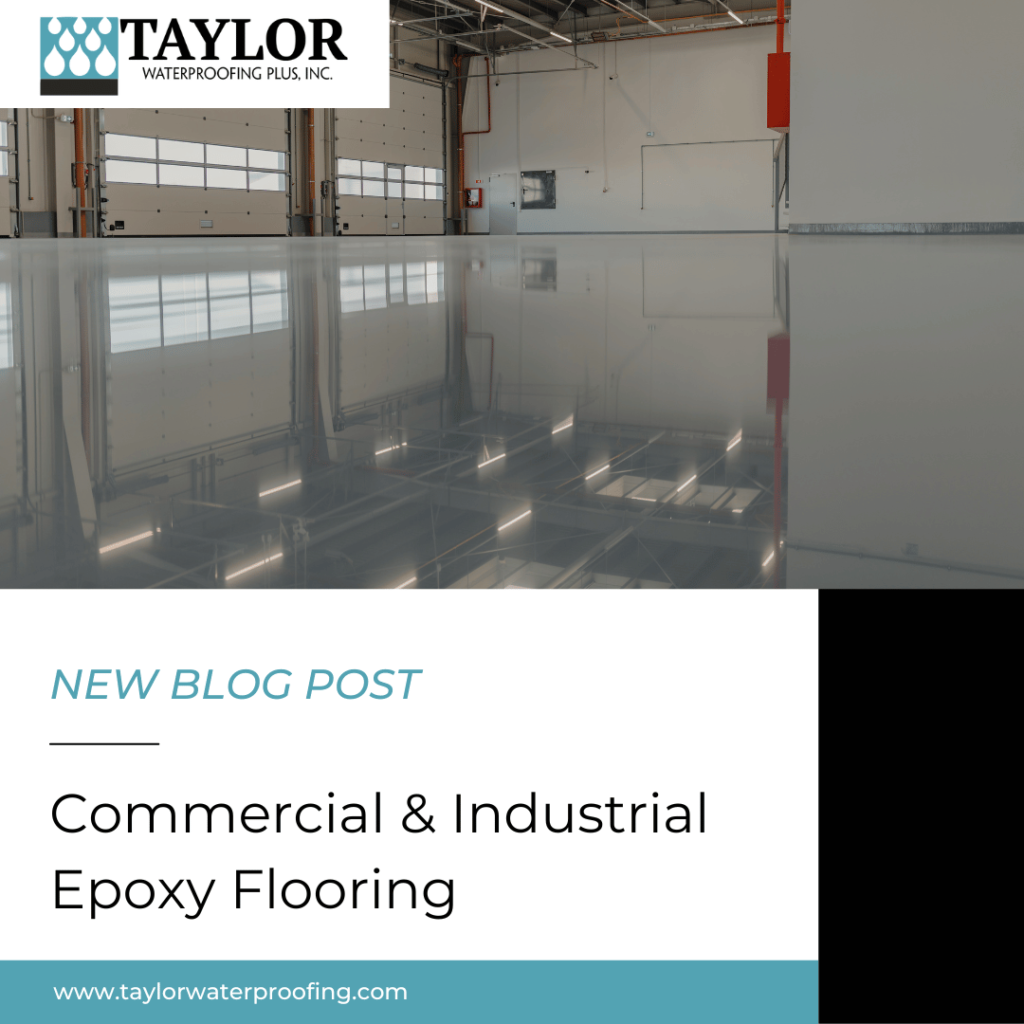
Commercial & Industrial Epoxy Flooring
Epoxy is a high-quality, long-lasting flooring option that is often used for commercial and industrial purposes. This flooring is easy to keep clean and can be used to resurface concrete floors that are porous and break down quicker than epoxy floors. The material is waterproof and seamless so is perfect for industries that work with spills or need a sterile working environment.
Here are some of the top benefits of commercial & industrial epoxy flooring uses.
Epoxy Flooring Benefits for Industrial Uses
Chemical-Resistant: In an industrial environment, such as a manufacturing plant or warehouse, chemicals may be part of the everyday routine. While this can cause damage to some types of flooring, epoxy is resistant to solvents, acids, alkalis, and corrosive materials.
Abrasion and Impact-Resistant: When you have an industrial business, heavy equipment and accidents, such as dropping tools, can cause scratches and damage to the floors. This makes epoxy a good option for high-traffic areas.
Longevity: Because of the benefits epoxy provides, it makes this flooring extremely durable. This helps customers in the industrial industries save money and reduce the cost of maintenance.
Epoxy is perfect for warehouses, manufacturing plants, auto services, research labs, sterile areas, and more.
Epoxy Flooring Benefits for Commercial Uses
Slip-resistant: If you have a commercial or retail business, you want to keep your employees and customers safe while also protecting your company. Having slip-resistant flooring like epoxy is a great way to prevent and reduce slips and falls.
Decorative Options: Epoxy comes in many colors and patterns. It is a great way to spruce up your building or business while also getting tons of practical benefits.
Easy to Clean and Stain-Resistant: Epoxy looks good year after year and is easy to maintain. This flooring is perfect for businesses looking to maximize their investments.
Epoxy is perfect for commercial kitchens, retail stores, hotels, hallways, and more.
To talk to one of our team members about commercial & industrial epoxy flooring, or your building’s waterproofing needs, contact us through our website here.
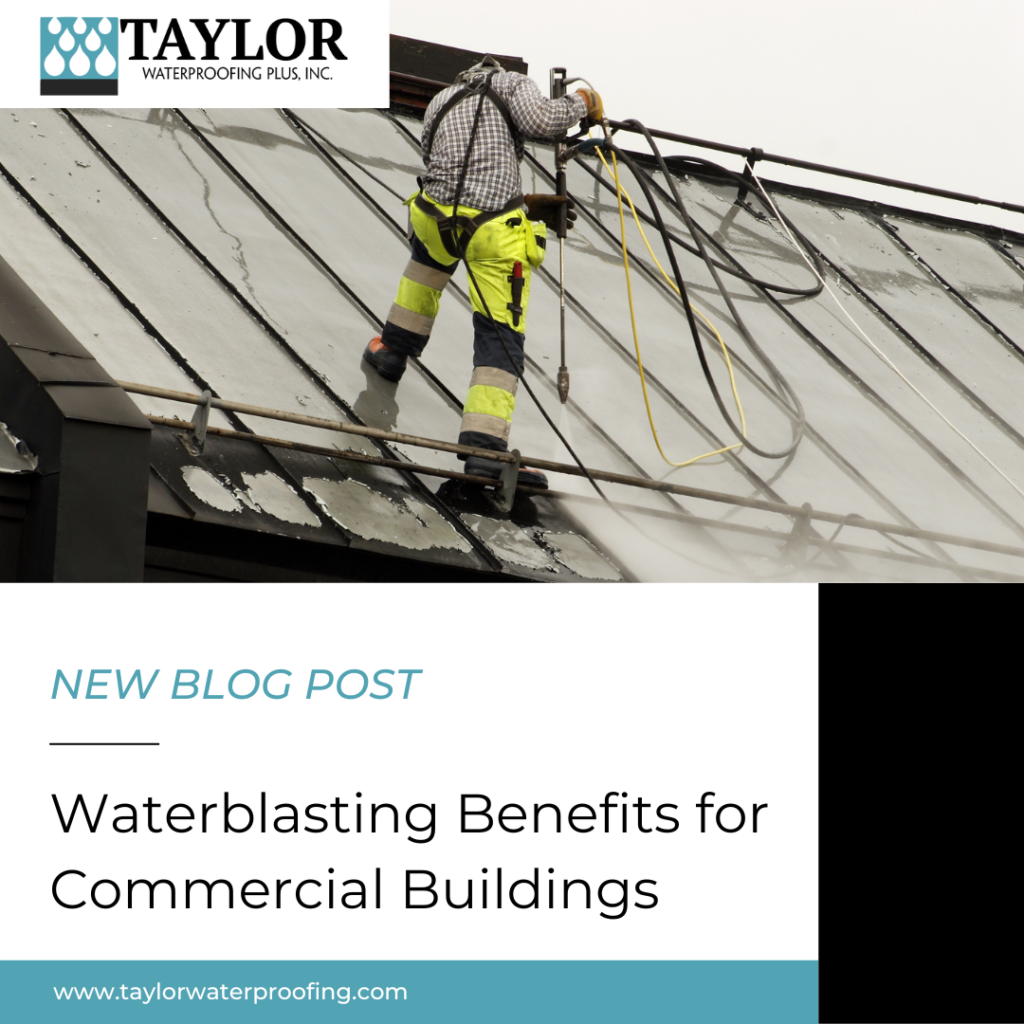
Waterblasting Benefits for Commercial Buildings
There are many waterblasting benefits that can help your commercial building stay in good condition. Waterblasting is a popular way to clean commercial buildings. This method of cleaning comes with many benefits to improve the look of your building and help you save money on repairs. It uses a high-pressure nozzle to spray water. When done at this level of pressure, it removes stains and pollutants without toxic or abrasive chemicals.
Waterblasting Benefits
Maintenance – Waterblasting cuts down on the need for future repairs and is a great way to maintain your commercial building. This reduces your overall maintenance and repair costs.
Sealant or Coating Prep – If you are having a sealant or coating applied or reapplied, it’s a great way to prep the area or wall. It cleans off dirt, grime, and oils that could prevent the coating from adhering.
Versatile – Waterblasting can be done on many different materials without negatively affecting the building. Waterblasting can be used for cleaning concrete, wood, stones, metal, and more. It can also be used on walls, floors, driveways, and other areas of your property.
Aesthetics – When your building is clean, it looks nice and attractive. Waterblasting removes mold, stains, dirt, grease, mildew, and old paint. Not only does this help with the look of your building but it can also raise your property value.
Health and Safety – Mold and mildew are safety concerns for your building’s occupants. If left untreated, the mold and mildew could work their way into the interior of your building and negatively impact the occupants’ health.
Waterblasting is a great way to improve your building’s appearance and cut down on repair costs. It is a great addition to your building’s waterproofing regiment and regular maintenance. Contact us here to learn more about waterblasting benefits and if it would be a good option for your building.
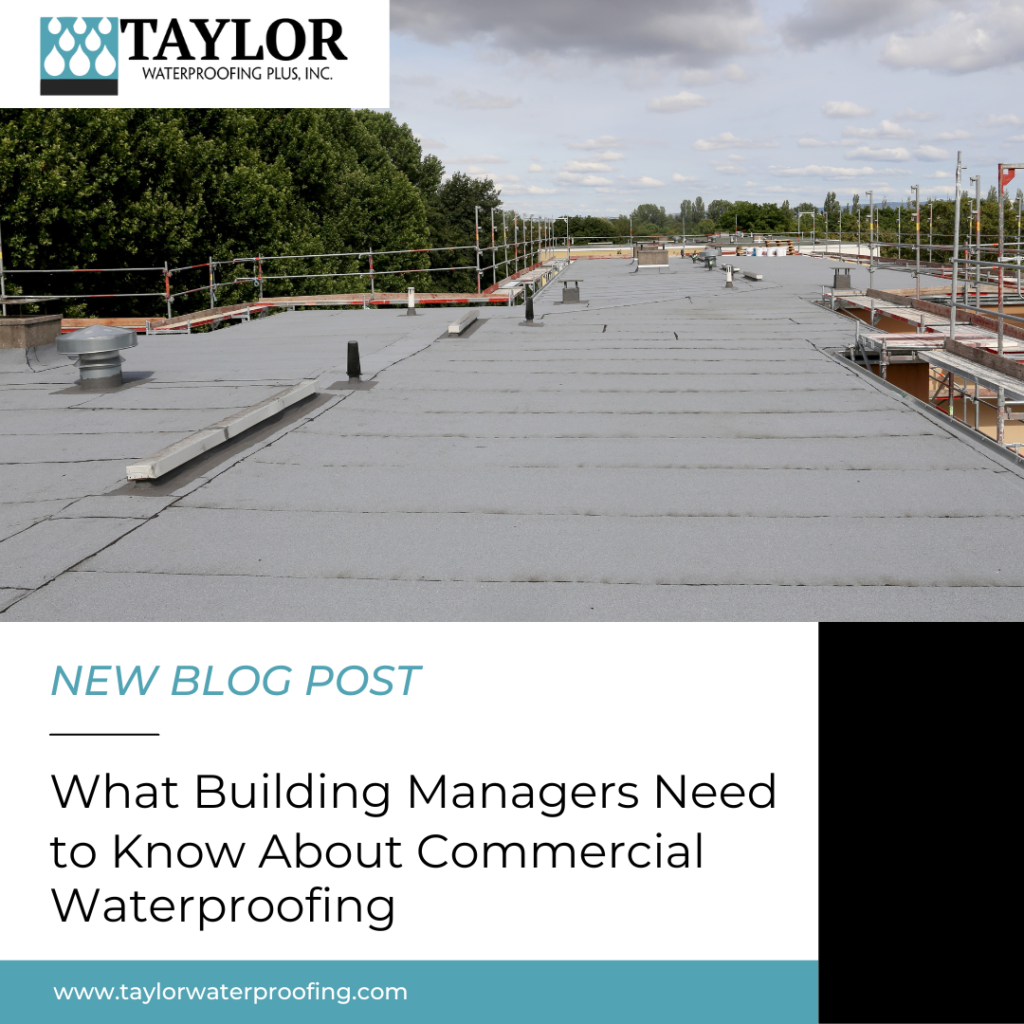
What Building Managers Need to Know about Commercial Waterproofing
If you own or manage a commercial building, your schedule is probably packed with a long to-do list. One thing that sometimes gets overlooked is waterproofing and inspections. This is a mistake when trying to protect and maintain the building. Being proactive with waterproofing will save you money in the long run on costly repairs. Here are some important things that building managers need to know about commercial waterproofing.
Why is Commercial Waterproofing Important?
Water damage not only causes cosmetic damage but can be detrimental to the health of the building occupants and cause structural damage to your building. If left untreated, water damage can cause mold and mildew growth in the building, causing health concerns. Waterproofing before these damages occur can ensure the longevity of your building and save you on repairs.
What Causes Leaks or Other Water Damage?
There are many places where water damage and leaks can happen. Water can leak out of pipes, from the roof, and even infiltrate the walls and interior of the building through concrete. A professional will assess the damage and determine the cause.
Using the Right Sealant
There are many different types of sealants and coatings that are made from different materials, such as silicone, acrylic, and polyurethane. Some sealants go on clear or glossy, while some act more as paint. Others have a thicker consistency for filling in gaps and joints. The one you decide on will be based on your waterproofing goals, the material you’re planning on waterproofing, and the aesthetic you are trying to achieve. Our team can give you all your options and help you pick what material is right for your project and building.
Concrete Needs to be Waterproofed
Whether it’s the concrete of the foundation, in the parking garage, or the floors inside of your building, concrete needs to be waterproofed. Water can seep into the pores of the concrete and cause the metal reinforcement to corrode or cause water damage to the surrounding areas. There are many options for waterproofing concrete and depends on where the concrete is located.
Inspections are Key
When it comes to waterproofing, inspections will help you stay proactive. A professional inspection will pinpoint where there is damage or where there could potentially be damage in the future and assess if any materials or sealants need to be replaced. This will prevent water intrusion and stop any leaks from getting worse.
Our team can help building managers and owners with any of the above and more. Your building will be in good hands with our trained and experienced waterproofing professionals. Contact us here to learn more about waterproofing your building.
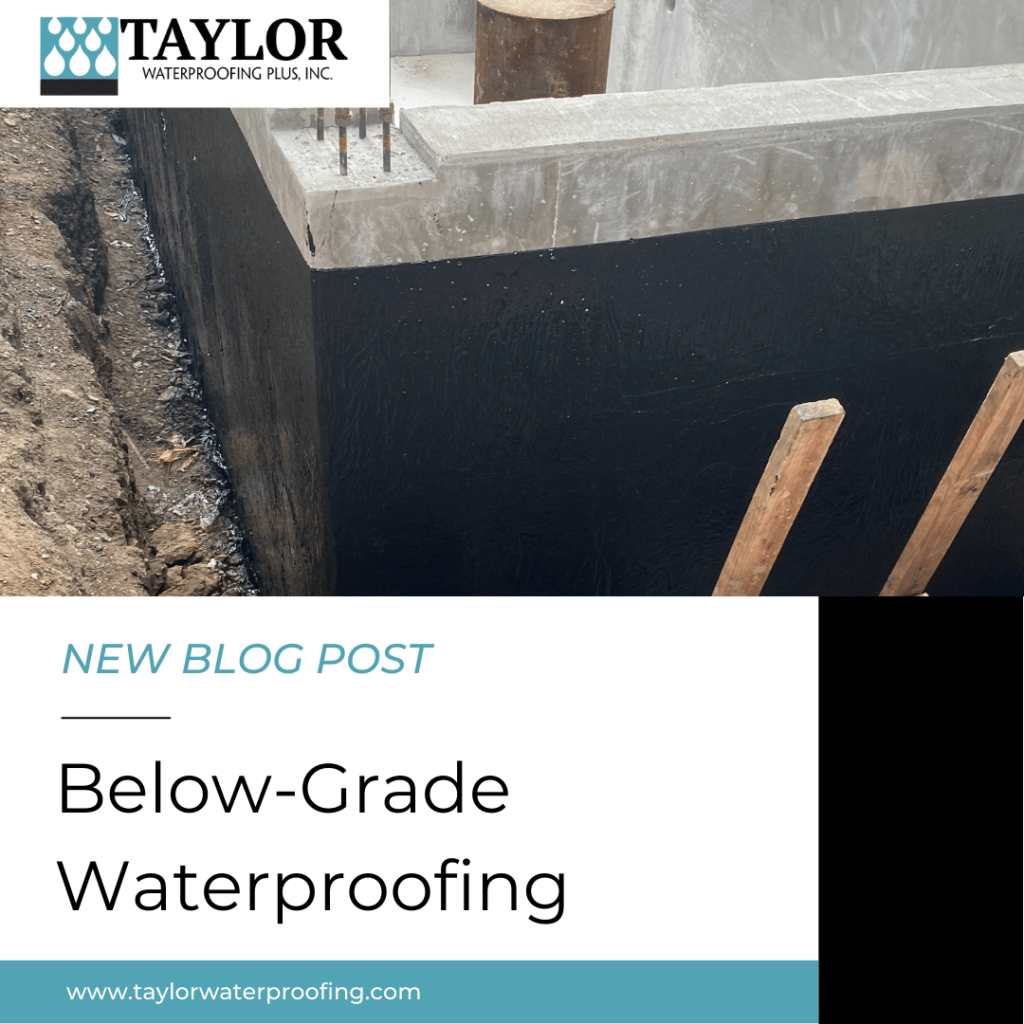
Below-Grade Waterproofing
When you are constructing a building or unground structure, such as an underground parking garage or basement, you’ll need below-grade waterproofing to make sure it keeps its structural integrity. These areas are subject to flooding and waterproofing is a way to prevent damage and increase the life of the structure. There are a few ways to install this waterproofing system, but the process refers to applying a waterproof coating or other material to the walls of the foundation, usually during the construction stages.
Because buildings’ foundations are constructed of concrete, it is porous and can crack over time. One health hazard to consider is mold and mildew growth due to water damage. Below-grade waterproofing creates a barrier between your building’s foundation and the earth. Along with below-grade waterproofing, making sure the building has proper drainage is also a huge aspect of mitigating these types of issues.
Below-Grade Waterproofing Types
Positive-Side Waterproofing – This application is done on the outside of the foundation where it will touch soil. This can consist of fluid-applied seamless membranes, sheet systems, or a combination of the two.
Negative-Side Waterproofing – This is applied to the interior of the building. It stops water and other materials from entering the building but not from penetrating the foundation. Because of this, it is usually done in conjunction with positive-side waterproofing or when the positive-side can not be done.
Overall, below-grade waterproofing protects your building by ensuring there is a barrier between the foundation and the outside elements. Without waterproofing, you could deal with structural issues, flooding, water damage, and toxic materials. When done correctly, below-grade waterproofing greatly reduces the risk of damage and protects your building and investment. To talk to one of our team members about the best waterproofing options for your project, contact us today!
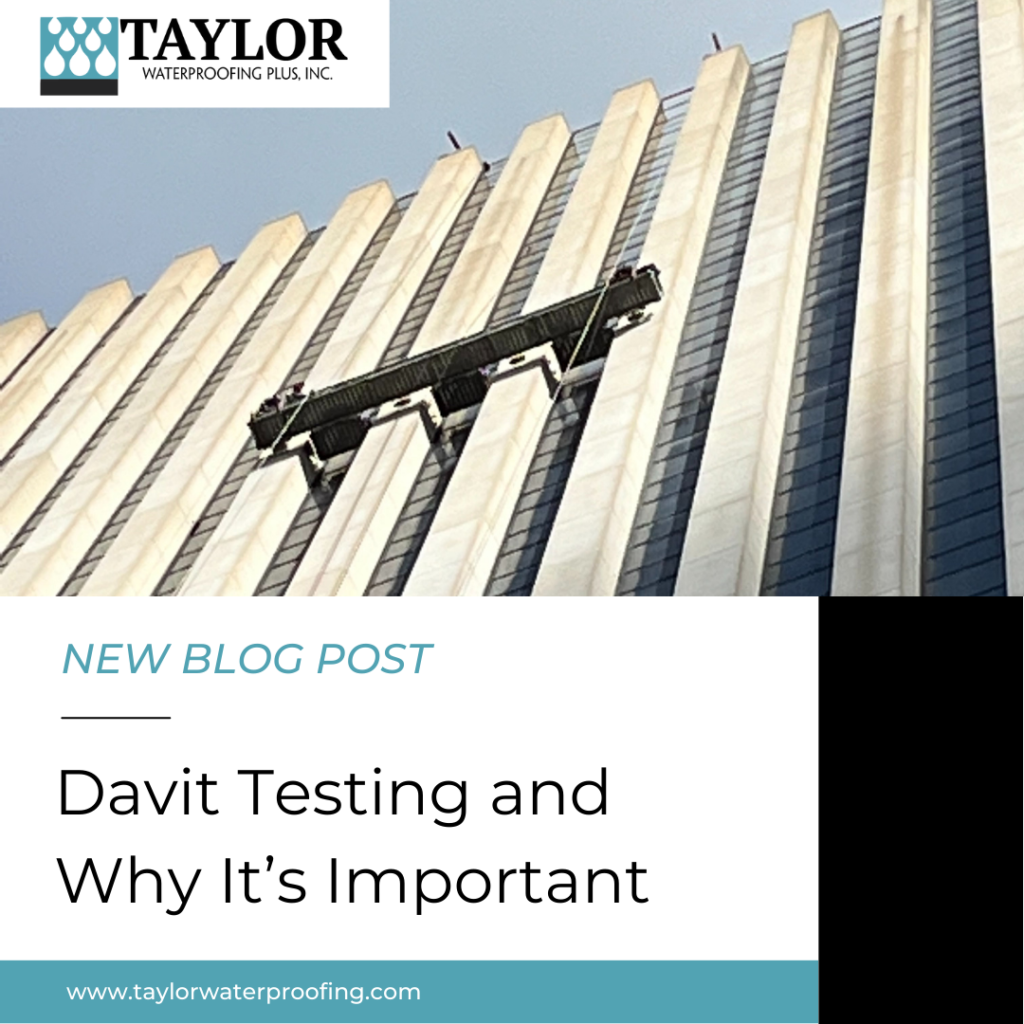
Davit Testing and Why it’s Important
What is a Davit?
If you are planning on having your building’s windows washed or waterproofed, the first thing you want to consider is safety. Roof davits, also referred to as tie-back anchors or tie-downs, allow contractors or trained employees to access the facade of the building. By using a davit, you can suspend a platform down the side of the building so the individuals performing the service can have a steady and safe working platform for maintenance, cleaning, and repair services. These anchors are required for any building with 4 or more stories and 3 or more stories if ground equipment can not easily reach areas that need to be repaired or maintained.
Davit Specifications & Testing
Davit testing and inspections are an important part of your building’s safety. OSHA has several standards to regulate davits to ensure safety. Davits must be ASTM A36 steel construction and fully galvanized finish to ASTM A123 standards. After the davit is installed on your roof, it must be tested and inspected.
A davit system must be recertified every ten years. Recertification is required every five years if adhesive, epoxy, or chemically bonded anchorages are used. When testing the equipment to OSHA requirements and certification, a load test will be done to verify the strength of the davit. These anchors need to withstand an ultimate load of 5,000 lbs in any direction. While it is required that the davit be recertified every ten years, a visual inspection will need to be performed once a year.
Why is Davit Testing Important?
There are many reasons to have davit testing performed. It ensures that your building is up to code and help prevents falls. It is a vital part of ensuring a safe work environment. This also keeps you in compliance with OHSA and other government agencies regulations.
Our team can help you make sure buildings and davits are up to code and safe. Our trained professionals ensure structural integrity and compliance through testing and visual inspections. Contact us today to learn more about davit testing or schedule a service.

